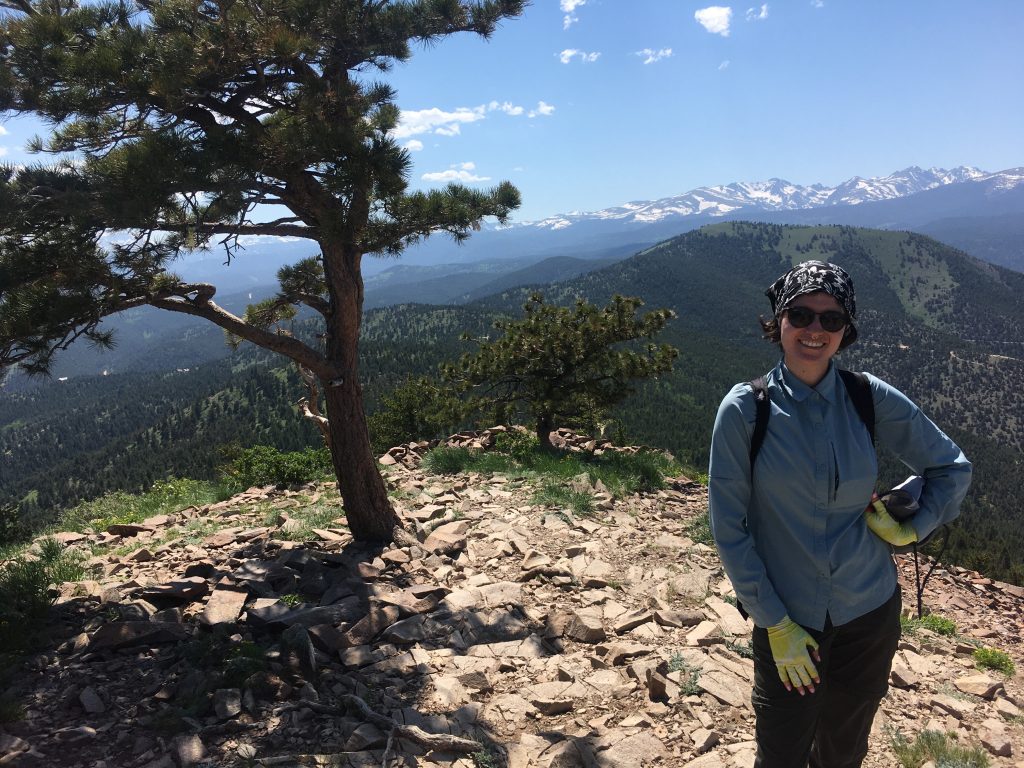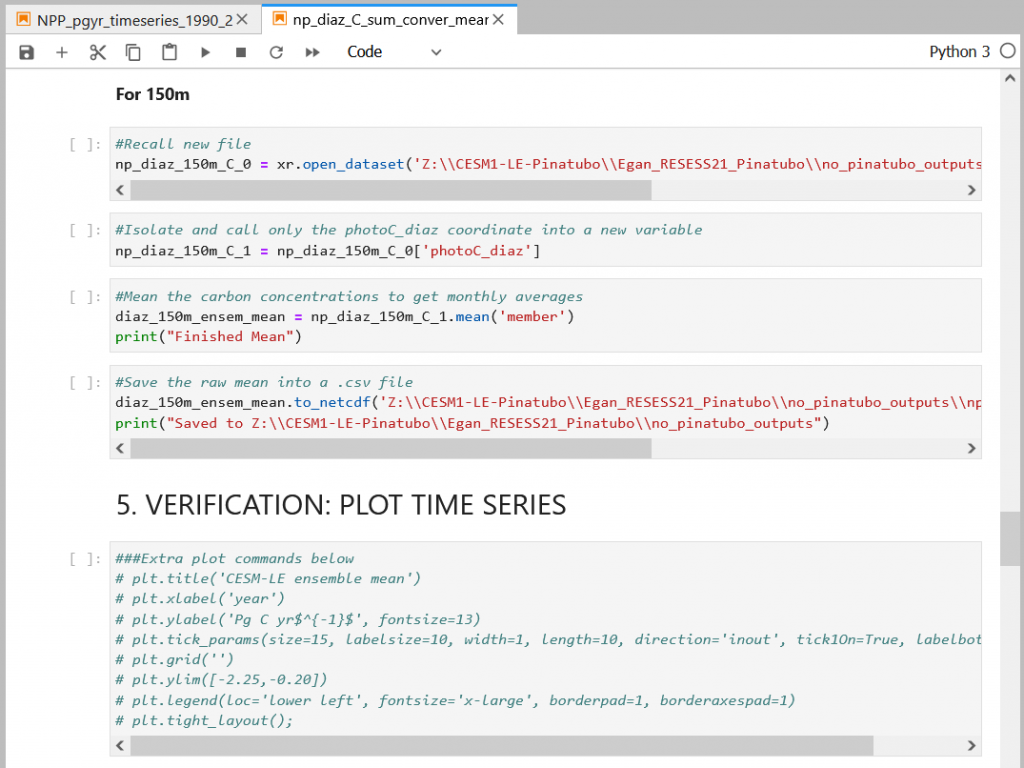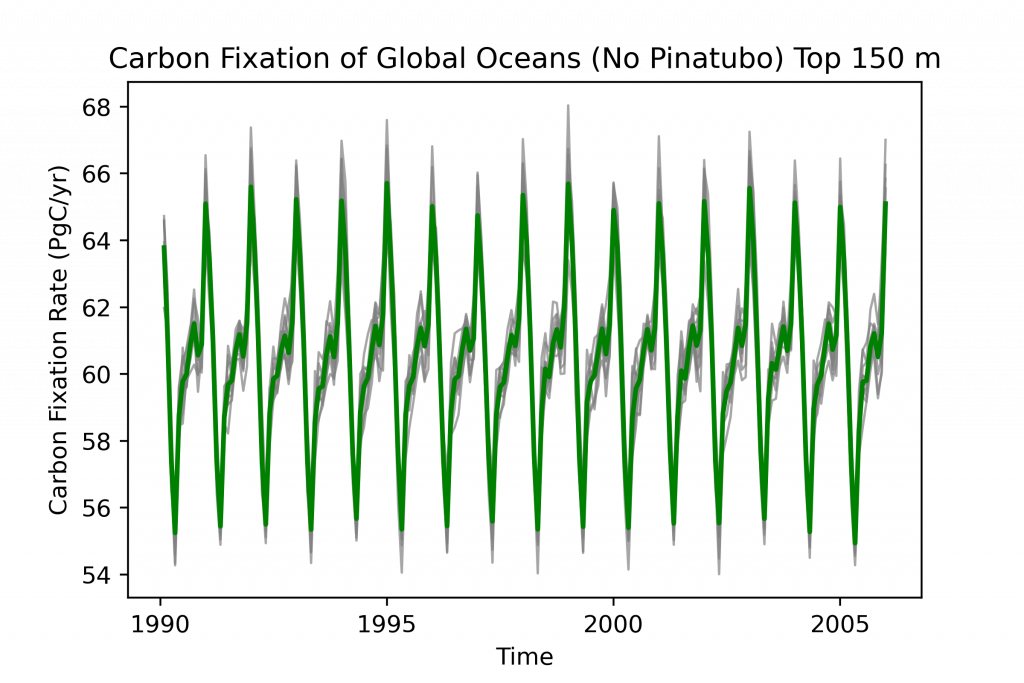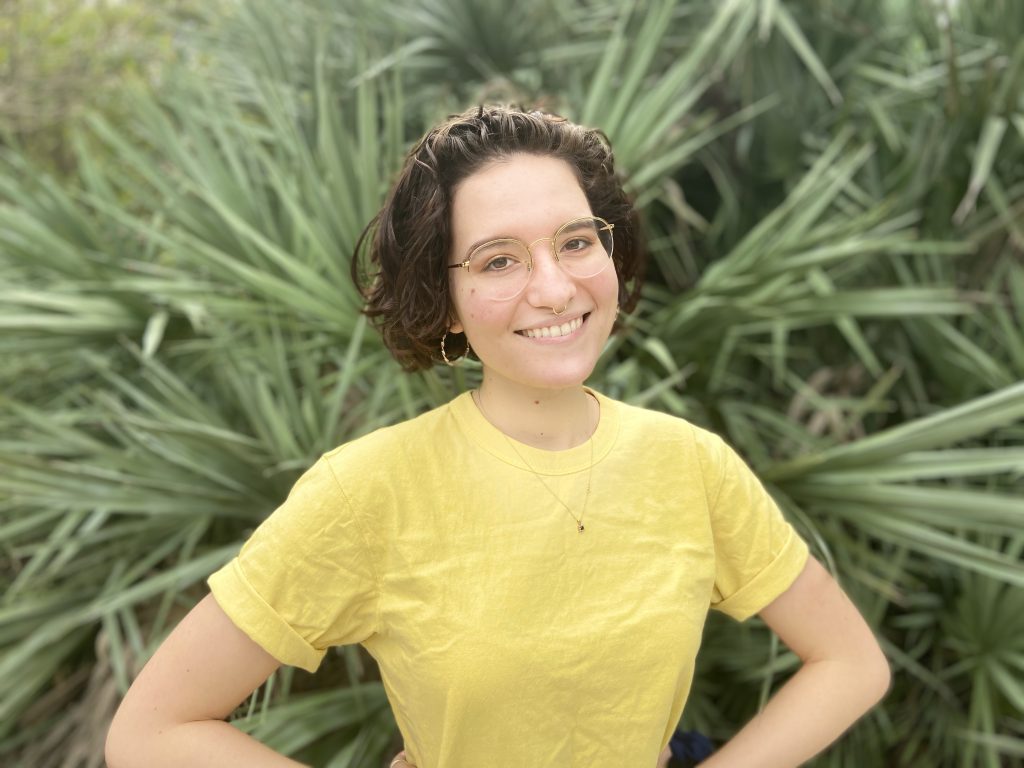
Shana Egan at the top of Sugarloaf Mountain near Boulder, CO after a hike with the RESESS and Geo-Launchpad interns. 
Example of Python code used to synthesize CESM1-LE data. 
The average productivity (carbon fixation rate) of phytoplankton in the upper ocean between 1990 to 2005, from CESM1-LE outputs that modeled the world’s oceans as if the 1991 Mt. Pinatubo eruption never occurred. 
2021 RESESS Intern Shana Egan.
This summer we’re introducing interns in the RESESS and Geo-Launchpad programs to shine a spotlight on the research projects they are completing throughout these 11-week internships and on their interests in geoscience.
Shana Egan is a rising senior at the University of Arizona, double majoring in geophysics and chemistry. Growing up in Florida, Shana was constantly exposed to hurricanes, launching her interest in natural hazards. After completing a project about volcanoes in elementary school, Shana knew that she wanted to pursue a career and education in geoscience. At the University of Arizona, Shana has been involved with two research projects. In the first, she spent a semester in astrochemistry research with the Ziurys group, examining the presence of polyatomic compounds in planetary nebulae to see if basic molecules form in these primal environments. Shana then began her current research project at the University of Arizona that uses apatite thermochronology techniques (including apatite fission track dating, apatite Helium dating, and apatite Uranium-Lead dating) to investigate the uplift timing of the Colorado Plateau at the Mogollon Rim in central Arizona. Shana is passionate about geoscience research and wanted to explore her interests in volcanology through the RESESS internship this summer.
Dr. Nicole (Nikki) Lovenduski of the University of Colorado and the Institute of Arctic and Alpine Research (INSTAAR) is mentoring Shana throughout the RESESS program. Alongside Dr. Lovenduski, Shana is completing climate modeling research to investigate the impact of the 1991 Mount Pinatubo volcanic eruption. She is working with the outputs of a larger climate model called CESM1-LE, which examines how the ocean environment changes based on different climate scenarios. For her project, Shana is examining data from 1990-2005 to determine if the atmospheric gases released by the eruption of Mount Pinatubo in 1991 impacted the size and productivity of global phytoplankton populations in the following years. Volcanoes release large amounts of water vapor, sulfur dioxide, hydrogen sulfide, hydrogen halides, and, of course, carbon dioxide. This introduction of gases can temporarily modify the climate, as shown by previous research suggesting that volcanic eruptions are tied to El Niño events, which can hamper phytoplankton growth. Her research will provide a better understanding of how volcanic eruptions impact the ocean and the marine biosphere.
Q&A
- What has been your favorite part of the RESESS program so far?
I really enjoyed being in-person and in Boulder. I also enjoyed the fact that we were all housed together, so we’d always do something on the weekends. Just being close, physically, was nice because we were all in a new area, so we can explore this new city together. We could always go out to lunch after our workshops and stuff like that.
- What have you gained from your mentorship with Dr. Lovenduski?
She’s so nice. First of all, she’s very understanding. She’s very passionate about her work, but it’s also nice because… she’s passionate about teaching as well, so she has that quality to try to make her research accessible. That’s nice because I don’t have an ocean sciences and climate background… What I really appreciate from her as well is that she’s very interested of course in our project, but she’s also like, you need to look at what you want to do…I want you to also look at… potential grad schools or where you want to go after you graduate because I know you’re a senior, and let me give you advice on grad school. That’s definitely invaluable, because I don’t necessarily have a mentor in my school life who I can do that with, especially somebody like Nikki, who is very invested in you.
- Have you learned about any new topics or research techniques that have really piqued your interest?
For sure! I learned a lot of Python coding, which is good. I’ve also become more familiar with Jupyter notebooks and other ways to do data science with Python and coding. That’s obviously very valuable because if you have a large dataset… it’s hard to do all that manually. Becoming more familiar with that has been very exciting this summer to accomplish.
After graduating from the University of Arizona with her bachelor’s degree next spring, Shana hopes to attend graduate school for volcanology or geohazards on the West Coast, ideally in the Pacific Northwest. After graduate school, Shana plans to work in natural hazards monitoring and to further explore science communication that informs the public about natural hazards.


